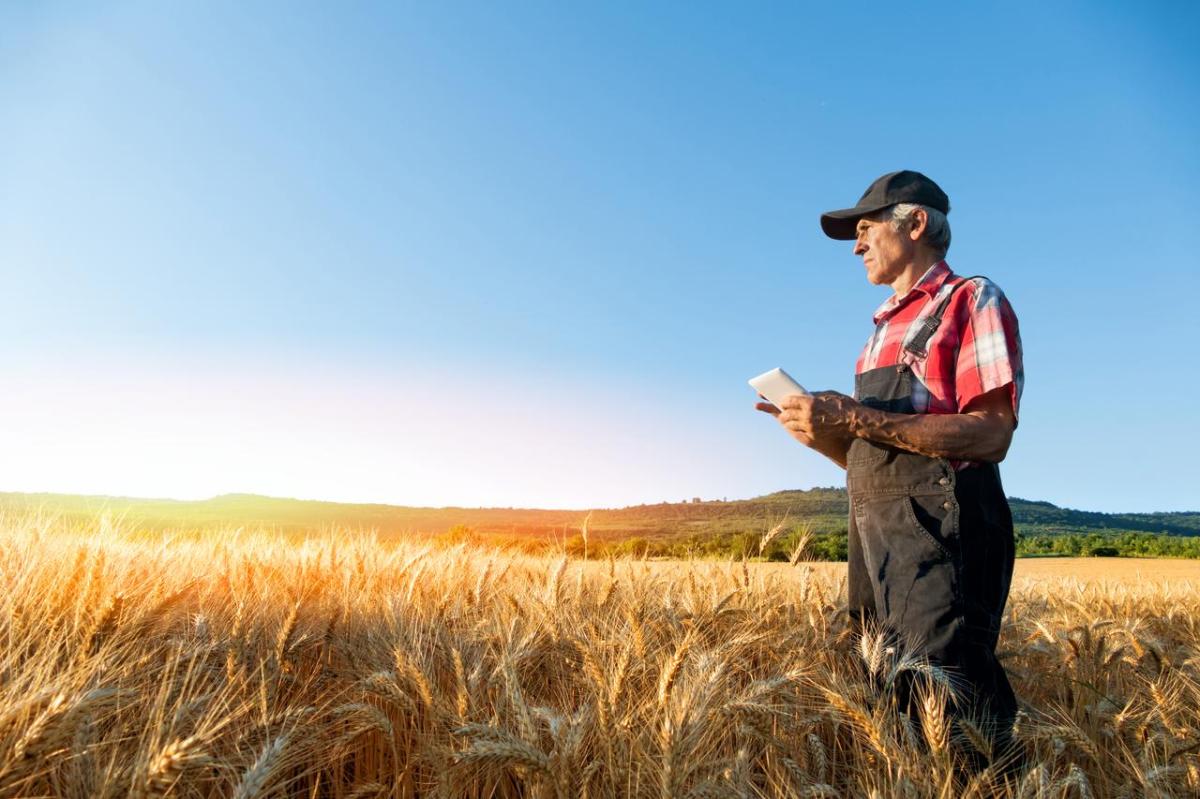Artificial intelligence is not only used to create illustrations or texts from a few simple commands or to feed the creativity of writers and filmmakers to create stories. It can also solve industrial problems by collecting and analysing massive amounts of data. In this sense, AI and agriculture have long been allies, a union that, in times of climate change and war, is more evident and necessary than ever.
In this article we will take a journey through the use of artificial intelligence in agriculture, some real projects that are being carried out in Spain and what are its main benefits.
Precision agriculture: artificial intelligence at the service of crops
Artificial intelligence aims to make machines learn to think like a human brain. Thanks to massive data collection, artificial intelligence can turn the primary sector into a much more efficient, optimised and safe activity.
Gathering data to anticipate problems
This is probably the biggest benefit of the application of AI in the primary sector. As the name suggests, it is about applying artificial intelligence for accurate, optimised and efficient farming by monitoring plots of land. Making the best possible decision based on data collected by tractors with GPS, drones, robots at the foot of the crop that detect anomalies…
A very recent example of the application of this type of intelligent and optimised agriculture can be found in the Community of Madrid. As the official website of the Community itself reports, it is a study “to improve monitoring in precision agriculture”.
Developed by the research institutes IMDEA Networks and AGUA, the project uses the greenhouse facilities of the IMDEA Agua campus to, in the words of the IMDEA Institute, “evaluate in a real environment the performance of the communications of the precision agriculture monitoring system”. And how do they achieve all this? Thanks to battery-free IoT devices, placed inside the greenhouse, which measure environmental parameters. This type of technology allows them to be placed anywhere in the greenhouse and creates a denser network of them, thus boosting production yields. The next challenge facing the Institute is to integrate new detectors to measure other variables that help the farmer, such as soil humidity.
AI against citrus pests
Another current precision agriculture plan is the so-called SENSOPLAG project, aimed at combating pests affecting the Valencian citrus crop. This project aims to produce a control system to reduce this type of pests, a system integrated by digital tools that achieve early detection, continuous monitoring of the pest and, consequently, to be able to prevent it.
In this project we will see very clearly how artificial intelligence can help the agricultural sector. AINIA, one of the organisations involved in the project and experts in sustainable innovation, collects and analyses satellite images and those captured by cameras integrated in drones to study the detection of pests and how they affect citrus fruits during different times of the year. All these tools and data obtained are then integrated into a single platform, an application that can then be consulted by field professionals to resolve their doubts, help them choose the best possible treatment and when to apply it for maximum effectiveness.
Agerpix, how much fruit is in a tree?
If we talk about artificial intelligence and agriculture in our country, we cannot fail to mention Agerpix, a company that develops precision agriculture solutions. They are pioneers in developing a system of artificial intelligence tools capable of detecting, with 90-95% accuracy, the amount of fruit in plantations.
This automatic fruit counting system is called OnFruit 360. It consists of a set of cameras and GPS that the farmer himself can easily install on his own tractor. The cameras take pictures of the crop while the worker walks among them at a certain speed. All these images provide information about the size and quantity of the fruit, the vigour of the plant and its leafiness by zones.
All this data tells the farmer how much irrigation, fertiliser or different phytosanitary products should be applied. In this way, and thanks to artificial intelligence, he will be improving the quality of his product, reducing his company’s costs and generating less waste.
Application of artificial intelligence in times of drought
According to the latest report from the State Meteorological Agency (AEMET), from 1 October 2022 to 18 July 2023, the cumulative value of rainfall was 480 litres per square metre, 15 % less than expected, taking into account data from the same period between 1991 and 2020. There are areas of Spain where even less than 75 % of their normal rainfall value is not reached.
In this context, the application of artificial intelligence can be an effective lifeline for the countryside. Let us take a current example: the Almeria-based company Ikos Tech offers tools to automate irrigation through an artificial intelligence algorithm. Its star product is called Ikoscontroller, a device to which up to 10 sensors are connected, including high-precision tensiometers that calibrate how the soil is and what water the plants need, as well as other sensors that analyse the humidity or ambient temperature.
All this group of sensors, connected to the Ikoscontroller centre (which is powered by solar energy) sends the information collected to the cloud, to an app developed by Ikos called Raindrop. Raindrop is an artificial intelligence tool that indicates exactly how much water a given crop needs and when it needs it. All the data then goes to the Ikosconnect, which is attached to an irrigation machine. The farmer only has to adjust the irrigation according to the algorithm’s recommendations and the process is done automatically.









